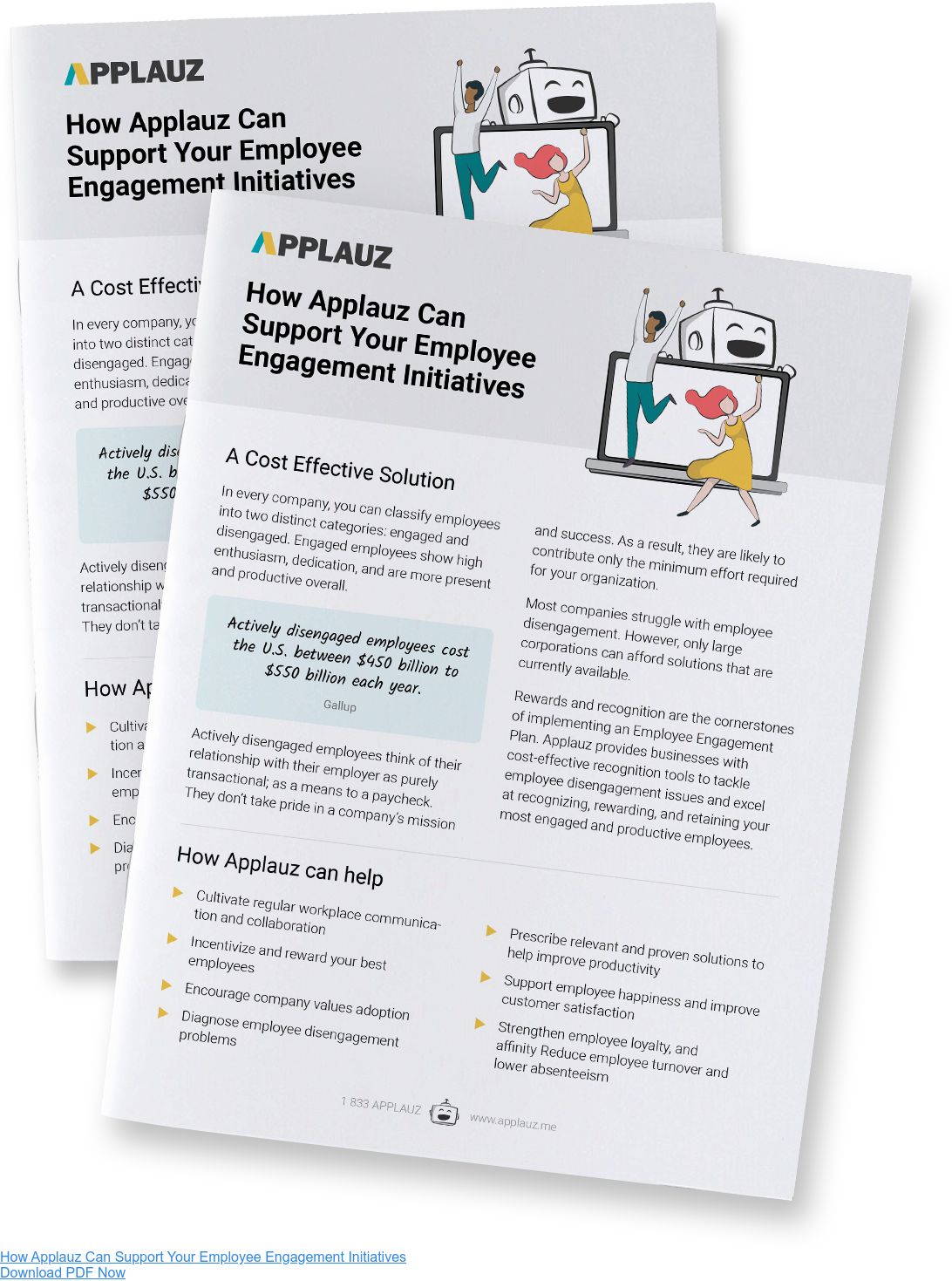 Employee Engagement Program Goals
Employee Engagement Program Goals

A crucial first step to any strategy or higher-level plan is to articulate your engagement goals. Clear, achievable, and measurable goals are a necessity because they give direction to your plan.
Not sure what your goals are?
Another way this can be articulated is: What are your biggest HR challenges?
It might be employee disengagement. Or low morale and productivity. Think about your most important issues and let that kick off your strategy document.
Common employee engagement goals
Having these concrete goals in place will allow you to measure the success of your efforts later.
Here are six (6) of the most common goals when it comes to employee engagement:
- Lower absenteeism rate
- Increase retention/lower turnover
- Increase productivity
- Increase employee happiness
- Increase customer satisfaction
- Improve organizational culture
We suggest you pick two-three high-level corporate objectives that your company wants to reach this year. Break them down by a quarter to make it easier to gauge and manage results.
All these goals are quantifiable; in short, they can be measured against a goal or desired outcome, albeit some with more difficulty than others.
For example, measuring something more abstract like “employee happiness” will occupy more time and resources, with the administering of surveys. However, tracking employee turnover, for example, is much easier and requires no involvement from your employees.
Identify employee pain points
Let's say you kicked-off the year with a personal well-being and lifestyle goal to build your overall muscle strength. The objective you selected will have a direct influence on which actions you take to achieve that goal. In this case, you will invest in strength training instead of a calorie-restrictive diet if your goal is to build muscle strength as opposed to weight loss, for example.
 The same logic applies when selecting the goals for your engagement strategy. Remember, the goals you choose dictate the direction of your engagement plan.
The same logic applies when selecting the goals for your engagement strategy. Remember, the goals you choose dictate the direction of your engagement plan.
That said, all of the engagement goals mentioned above are important to building a fully engaged workforce; however, some may need to be addressed more urgently than others.
For example, is your organization's turnover rate higher than usual for your industry? If yes, reducing turnover should take priority over other goals.
To pick the right goals for your business, you will need to answer these questions and also conduct a thorough audit and measure engagement in your organization. Measuring engagement is an important step that will help get a deeper understanding of which goals should have priority over others.
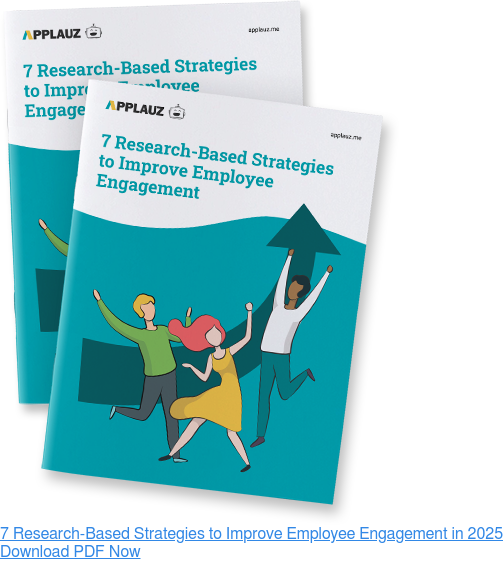
 Employee Engagement Program Budget
Employee Engagement Program Budget
Launching a strategic employee engagement program requires a certain level of investment of time and resources.
As a result, when tinkering with the idea of employee engagement, many managers and executives wonder just how much budget they should dedicate to developing an engagement program.
Many executives don’t make it past this point, as it’s (wrongly) believed that the ROI of such a “touchy-feely” initiative cannot be measured.
 First off, know that you should not expect to instantly commit a significant part of your budget to an engagement program, especially if your business is brand new to employee engagement.
First off, know that you should not expect to instantly commit a significant part of your budget to an engagement program, especially if your business is brand new to employee engagement.
Think about it like this: if you were to join a fitness studio to improve your health, you probably wouldn't lock yourself into a year-long membership right away. Fitness studios and gyms assume this. That's why they provide flexible options such as day or month passes; for those commitment-shy people who prefer testing services before investing a large sum of money. They know people want to gauge the "worth" of the service before making a maximum investment.
Similarly — when it comes to investing in an engagement program — it's reasonable to establish the potential ROI before committing the maximum amount of time and money.
Pro Tip: Check out our ROI Calculator to calculate the ROI of employee engagement for your business!
How much should you spend on employee engagement
The first step to drawing up a budget is to do some research and look at what other businesses are dedicating to programs. In short, let’s determine a benchmark.
An important industry benchmark is found in the 2016 Society for Human Resource Management and Globoforce Employee Recognition Survey.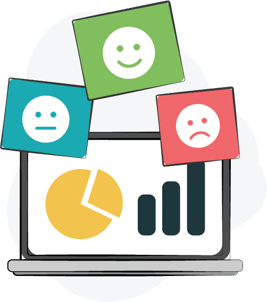
The results of this survey show that a “sweet spot” for values-based rewards and recognition investment is 1% or more of payroll.
When companies make this level of investment (1% of payroll) they are nearly three times as likely to rate their rewards program as excellent, compared to companies that invest less.
Remember this budget is for a reward and recognition program only. Not all your engagement initiatives will be related to rewards and recognition as we will see later in this guide.
 Building An Employee Engagement Strategy
Building An Employee Engagement Strategy
Strategic planning: why it's critical for lasting engagement
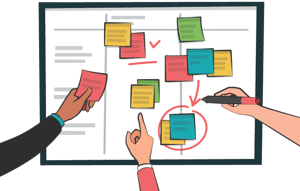
If you search the internet for employee engagement strategies, you will find long lists of seemingly random ideas.
You'll find solutions like "throw team parties" and "let employees bring their dogs to work."
These ideas might be good, but they are not strategies.
Too often, companies spend time and resources on HR initiatives without thinking strategically about them.
For example:
- Implementing a trendy HR initiative without considering the problem you're trying to solve or if employees will benefit from it.
- Spending money on a program and not questioning whether your employee want to participate in it.
- Offering benefits that employees don't care for.
On the other hand, being strategic about employee engagement means every initiative you invest in addresses a real problem in your company.
This means:
- Understanding the core drivers of employee engagement (more on this later).
- Identifying your employee pain points and crafting tailored initiatives accordingly.
- Speaking with or surveying employees to gain insight into what they want from their workplace.
Now, It's time to move forward to the next step: how you will reach your engagement goals. In short, the meat of your strategy.
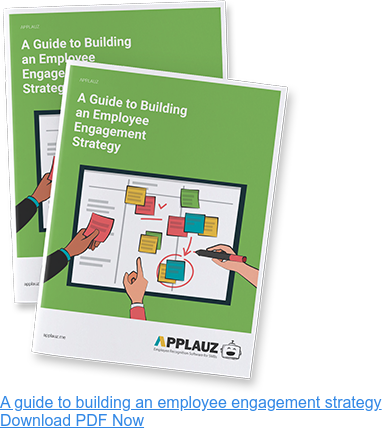
Starting your employee engagement strategy
Now, you should have the most urgent people's issues at the top of your mind. And you are armed with an understanding of what it means to be strategic about employee engagement.
Now, it's time to move forward to the next step: how you will build a well-rounded employee engagement strategy.
At Applauz, we've developed a practical framework to help guide you through building your engagement strategy.
Let's explore this framework…
Step 1 — zoom out on the key drivers of employee engagement
Think about the essence of a great employee experience.
You're probably thinking of things like great leaders, good work-life balance, a place where you feel stimulated to learn and grow.
These are what we call the "driver of employee engagement." In short they are the pillars of an employee engagement strategy.
This framework helps identify the most critical areas of the employee experience so that you can start systematically building your action plan around it.
- Career Growth
- Leadership
- Diversity & Belonging
- Wellness & Balance
- Recognition & Rewards
- Mission & Purpose
- Goals & Alignment
- Autonomy & Empowerment
- Benefits & Compensation
- Team & Communication
- Safety & Security
- Work & Performance
When building a long-term, strategic engagement plan, start by selecting a driver of engagement (like Rewards & Recognition, for example) and asking yourself the following questions:
- What specific initiatives do we have in place to support this driver of engagement? (For example, how is our company supporting rewards and recognition at a systemic level?)
- Will investing in a new initiative in this area address our most urgent people problems?
- What could we do better in this area?
Repeat the exercise until you have systematically tackled the entire pie.
Building an employee engagement strategy means choosing the drivers of engagement that respond to your most urgent HR problems.
Not sure which area of the employee experience needs the most attention? Go to your employees to find out!
Pro Tip: Many companies use a Pulse Survey Tool to conduct surveys and collect employee feedback. Doing this allows managers to make informed, data-driven decisions on which tactics to prioritize.
Step 2 — zoom in and identify actionable initiatives
Now you know about each driver of employee engagement. You should also have a good idea of which drivers need the most attention in your business.
The next step is to come up with actionable ideas to support each driver of employee engagement.
For example, Wellness & Balance is a key driver of employee engagement. But, this idea can be expressed in many ways.
In short, Wellness & Balance must be brought to life with specific initiatives — for example, half-day Fridays, work-from-home policies, on-site yoga classes, etc.
To help you get started, we will look at some common examples of initiatives from each driver of employee engagement.
Employee engagement initiatives examples
Here are a few common examples of initiatives for each driver of employee engagement:
Goals & Alignment
- Institutionalize monthly 1:1 meetings between employees and direct managers.
- Implement performance and goal tracking software.
- Institutionalize formal communications training for all new managers.
Career Growth
- Establish an internal job board and support promotion from within the company.
- Dedicate a budget to subsidize courses and knowledge development for employees.
- Make managers accountable by establishing "coaching and employee development" as an official goal for their performance evaluations.
Mission & Purpose
- Launch a monthly company newsletter (for internal staff only).
- Establish and document your official company values and mission. Include this in the presentation and documents for new hires.
- Implement a recurring all-hands executive presentation and lunch.
Leadership
- Institutionalize empathy training for managers.
- Launch yearly manager evaluations (employees anonymously evaluate their direct manager).
- Re-imagine managers performance grid to include evaluation on their coaching and leadership efforts.
Diversity & Belonging
- Launch unconscious bias training for recruiters and managers.
- Evaluate your executive team – do they portray diversity and inclusion.
- Create inclusive policies and practices that honor multiple religious or cultural practices or holidays.
Wellness & Balance
- Offer a flex-time policy.
- Build a work from home structure and policy.
- Offer employees credit for gym memberships or other wellness activities.
- Launch on-site mindfulness and yoga practice.
Autonomy & Empowerment
- Institutionalize “passion project” time each quarter.
- Launch a quarterly "think tank" session on the organizational or department level.
- Implement a suggestion system. Employees can send anonymous feedback to HR anytime.
Benefits & Compensation
- Audit your compensation and benefits package--is it competitive?
- Consider a retirement plan (if you don’t offer one already).
- Consider offering paid parental leave (if you don’t offer it already).
- Revise your PTO policy if it's not competitive.
Rewards & Recognition
- Implement a Peer-to-Peer Recognition Program.
- Implement a Employee Recognition Training for all new managers.
- Launch an employee Service Awards Program.
- Offer a budget for a lunch and celebration for employee’s birthdays.
After this exercise is complete, you should have a clear idea of the concrete initiatives you will take to reach your ultimate goal of higher employee engagement.
 Implementing an Employee Engagement Program
Implementing an Employee Engagement Program
Now that you’ve created a road map to success, and had it approved (if necessary), it’s time to roll up your sleeves and start putting these on-paper ideas into action.
Work on the list of initiatives in order of priority that you determined earlier.
Some initiatives will be more time consuming and costly than others, so it’s important to keep that in mind when deciding which to roll out first.
Breakdown initiatives into even smaller steps
 Although initiatives — such as "implement a recognition software" — are already precise and actionable, it's essential to breakdown each one into even smaller steps.
Although initiatives — such as "implement a recognition software" — are already precise and actionable, it's essential to breakdown each one into even smaller steps.
When each action is broken down into smaller and achievable goals, the path to success will be direct, clear, and manageable.
Taking the above examples, let's say you've decided to prioritize "Rewards & Recognition," and your goal for the next quarter is to implement a formal recognition software and also implement a Years of Service Program.
Implementing two programs can't be done in a single click. It's a multi-step process.
Here is what a typical “to-do” list would look like for implementing a Years of Service Program:
- Determine budget
- Budget approval (if needed)
- Create a list of options that fit the budget
- Contact companies to ‘shop’ and compare features, etc
- Narrow down to three finalists
- Present options to decision-maker for final approval
- Purchase and implement service chosen
- Train management to use program
- Program announcement and training for employees
As you can see, implementing an on-paper idea and bringing it to life takes several steps and the collaboration of other people and departments. You could even break down some of these steps further!
The most important thing to remember is that breaking down the list into these small and actionable steps makes a large and daunting project look and feel more manageable and less anxiety-provoking overall.
 Strategies for Engaging Millennials at Work
Strategies for Engaging Millennials at Work
By 2025 Millennials will represent up to 75% of the global workforce; it’s time to discuss the reality of Millennials in the workplace. So, what do Millennials really expect from their work? How can companies properly engage and recognize them?
 First, it’s important that we debunk some common myths about this generation.
First, it’s important that we debunk some common myths about this generation.
Millennials aren’t exactly kids anymore. It’s been about eight years since Time Magazine ran their cover story about Millennials being the entitled “me me me” generation.
In 2020, this generation are now approximately between 24 and 39 years old. In short, this generation is all grown up. We are not so different from the generations preceding us.
However, Millennials do differ in some ways from other generations, such as their familiarity with and comfort with technology. Millennials also differ in their approach to work, as they are more likely to seek jobs and careers that fulfill identity needs. In short, jobs that feel meaningful and fulfilling on an emotional level.
With that in mind, there are some common Employee Engagement Strategies that are used to motivate Millennials in the workplace, specifically.
Company values & culture proven to engage Millennials in the workplace
The Millennials generation grew up in the 80s and 90s, a pivotal time for technology and commerce. During this time, jobs were plentiful; incomes soared, stocks quadrupled in value. These times were characterized by consumerism, comfort, and abundance.
Although Millennials still share the same basic psychological needs as all other workers — after all, we are all human — growing up during such a critical time in our social and cultural history has shaped millennial’s desires in specific ways.
Millennials are progressive and forward-thinkers.
Characterized by an optimistic and open-minded attitude, Millennials want to engage in work that matters not only to them but to society at large. In short, they are socially conscious.

The keyword: impact. Millennials want to find work that creates an impact on some level — whether that in the company they work for, or on an even higher cultural and societal level. As a result, keeping Millennials engaged is conditional on continuously demonstrating how their efforts make a difference.
That said, look at some of the brands that Millennials covet, carefully observe their design, aesthetic, and deeper emotional message. This will help to understand the types of values that resonate with the millennial generation.
For example:
- Innovation
- Minimalism
- Sustainability
- Authenticity
- Openness and flexibility
- Personal development
The ultimate takeaway: If organizations want to retain top millennial talent, they have to start thinking not necessarily bigger, but deeper, focusing on building a thoughtful and conscious community that brings a more significant meaning and purpose to the world, rather a place where workers simply labour towards profit.
 Employee Engagement Strategies for Manufacturing Workers
Employee Engagement Strategies for Manufacturing Workers
Your car, a television, a cold beer, a t-shirt, a toothbrush — virtually every single consumer product used in our daily lives was brought to life thanks to millions of skilled industrial workers.
Whether they are machine operators, safety inspectors, or forklift operators, manufacturing employees work in an environment that is very different from your standard 9-5 desk job.
A different type of environment
These are highly manual, labour-intensive jobs. Long shifts are often expected. Workers are on their feet for long periods, constantly lifting, moving, and shifting around to complete their tasks.

Moreover, workers are often exposed to intense heat, cold, or dangerous machinery and potentially hazardous materials that require wearing protective safety gear like gloves, goggles, and steel toe boots.
Many of these jobs are task-driven and repetitive in nature, which creates its own set of issues for workers and concerns for managers. A recent Netflix documentary called “American Factory” does a great job of painting a picture of the real-life mental and physical challenges of manufacturing workers.
In short, the nature of the factory or warehouse work is unique. That’s why keeping industrial and warehouse workers engaged and satisfied takes a slightly different approach. Ultimately, ensuring that industry workers are happy and engaged will not only increase your bottom line in terms of productivity but will also reduce the incidence of accidents and injuries in the workplace.
Respect: the number one management philosophy
Respect, as a basic philosophy, should underpin all the higher-level business decisions made when managing a team of manufacturing workers.
Manufacturing work is physically and mentally taxing and demanding. As a result, if you want workers to feel happy and engaged to work efficiently, they need to genuinely feel they are treated with respect and fairness every day.
What does this mean in action?
It means paying workers fairly, giving them enough breaks, being open about listening to their ideas, and formally praising and recognizing employees for excellent work.

Inclusivity is key
Warehouse workers are generally physically secluded from the rest of the employee population given the nature of their work
If warehouse or manufacturing workers feel left out from the rest of the business, their motivation and engagement will suffer as a result.
These workers need to be reminded that their work is just as important as the people in accounting, marketing, and sales — because it truly is.
 The Best Employee Recognition Template for Meaningful Acknowledgements
The Best Employee Recognition Template for Meaningful Acknowledgements

